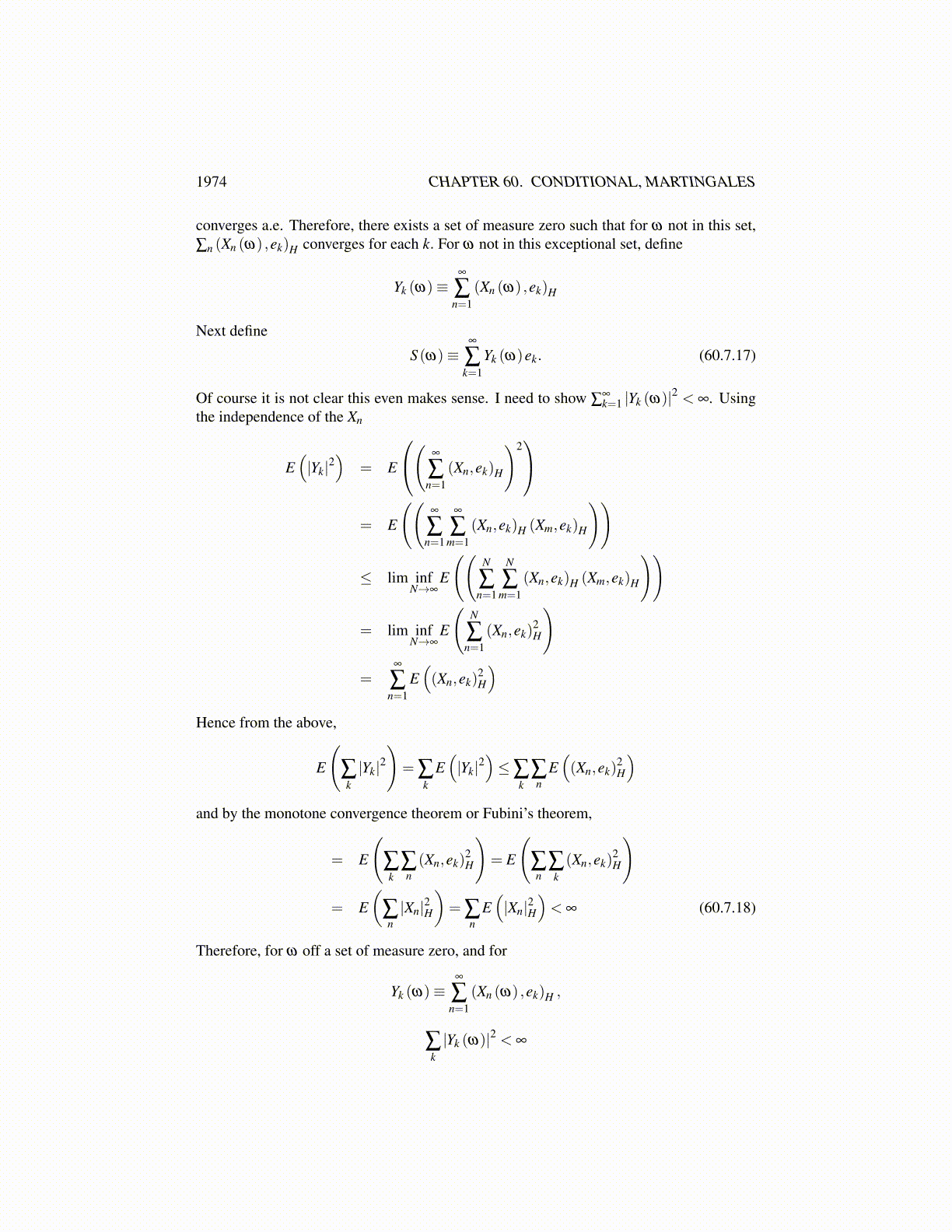
1974 CHAPTER 60. CONDITIONAL, MARTINGALES
60.7 The Submartingale Convergence TheoremWith this estimate it is now possible to prove the amazing submartingale convergence the-orem.
Theorem 60.7.1 Let {Xn} be a real valued submartingale such that
E (|Xn|)< M
for all n. Then there exists X ∈ L1 (Ω,F ) such that Xn (ω) converges to X (ω) a.e. ω andX ∈ L1 (Ω) .
Proof: Let a < b be two rational numbers. From Theorem 60.6.9 it follows that for allN, ∫
Ω
UN[a,b]dP ≤ 1
b−aE((XN−a)+
)≤ 1
b−a(E (|XN |)+ |a|)≤
M+ |a|b−a
.
Therefore, letting N→∞, it follows that for a.e. ω, there are only finitely many upcrossingsof [a,b] . Denote by S[a,b] the exceptional set. Then letting S ≡ ∪a,b∈QS[a,b], it follows thatP(S) = 0 and for ω /∈ S,{Xn (ω)} is a Cauchy sequence because if
lim supn→∞
Xn (ω)> lim infn→∞
Xn (ω)
then you can pick liminfn→∞ Xn (ω) < a < b < limsupn→∞ Xn (ω) with a,b rational andconclude ω ∈ S[a,b].
Let X (ω) = limn→∞ Xn (ω) if ω /∈ S and let X (ω) = 0 if ω ∈ S. Then it only remainsto verify X ∈ L1 (Ω) . Since X is the pointwise limit of measurable functions, it follows Xis measurable. By Fatou’s lemma,∫
Ω
|X (ω)|dP≤ lim infn→∞
∫Ω
|Xn (ω)|dP
Thus X ∈ L1 (Ω). This proves the theorem.As a simple application, here is an easy proof of a nice theorem about convergence of
sums of independent random variables.
Theorem 60.7.2 Let {Xk} be a sequence of independent real valued random variablessuch that E (|Xk|)< ∞,E (Xk) = 0, and
∞
∑k=1
E(X2
k)< ∞.
Then ∑∞k=1 Xk converges a.e.